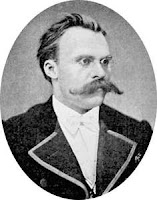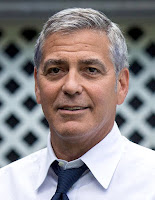Being healthy is good but being constantly obsessed with
one’s health is neither good nor healthy. It is true that we often neglect
health matters, especially in the modern day and age where we have more wealth
and with it more immediate access to junk food dangerously paired up with a
sedentary lifestyle. It is a sad and tragic irony that a billion of people are
overweight and obese, while another billion is suffering from serious
malnutrition in other parts of the world. The former attempt to shed their
excess pounds through diet, exercise and pills, while the latter are trying to
survive and make it to the next day.
Nonetheless, this health crisis ought not to be blamed only
upon the quick and easy access to fast food alongside its quick and fast
lifestyle that includes and embraces microwavable food. In fact, we are further
driven and prompted by advertisement and our surroundings to consume more and to
consume more often and that includes everything from electronic devices to
unhealthy food options. The same way we instinctively grab for our smartphones,
we munch and snack on chips, cookies and chocolate, the three deliciously
dangerous and addictive Cs in our lives.
It is not a complete surprise then that we have wide-ranging
and serious problems with obesity and that shockingly this begins and develops now
at a much younger age than ever before. Nowadays, even children can develop Type
2 Diabetes and as a rule they suffer from more and more health problems that
used to be applicable to adults only. It is also true that psychological
factors aside, one of the main culprits here is our careless and constant food
intake.
As we are bombarded not only with information that is harmful
to our psychological and physical well-being, we also face - in some cases too
much - information about being and becoming healthy. In today’s world when
technology allows and enables us to access an unprecedented wealth of
information at our fingertips, this can come as a blessing but equally as a potential
downside for some.
Indeed, we are often like pendulums that know not of
moderation and may go from one excessive side to another. There are times where
we completely neglect our health only to replace it later with an ardent obsession
for it. While the previous – our neglect and avoidance of healthy behavior - is
often mentioned, discussed and criticized in the media as well as with friends
and colleagues, the latter – our obsessive drive for health - is not given much
food for thought nor is there much discussion about its potential toxic effects
on our health and well-being. But there ought to be.
In fact, not caring about one’s health is almost as equally
bad as caring too much for it. In most of these cases, the root of the problem of
both sides of the pendulum is psychological, namely neuroticism stemming from
trauma, past experiences, drives and lifestyle. These neurotic tendencies may
manifest themselves in different rather extreme forms. We only need to look at the
media to notice how obsessed people have become vis-à-vis diets and dieting and
that they nervously jump and hop on and off from one trend or bandwagon to
another. Although some adjustment to diet is not a bad thing, the pendulum may swing
from the Atkin diet to paleo and gluten-free fads, and we are often left in
rather the same state and weight (if not worse) as we began initially.
I am not saying that taking care of one’s health, adjusting
one’s lifestyle or watching what one eats and drinks is not important or
essential for our well-being, but I am concerned with those for whom this is
merely a substitute and a rather convenient foil and excuse for obsessive and
compulsive behavior. While carelessness with health is generally frowned upon
and obesity is often attacked up to the nasty and cruel point of shaming
people, we let health-obsessed people off the hook. Well, until now at least.
They may be able to go below the radar but their fierce
manners of adamantly and continuously searching for their health makes them a perfect
candidate for unhealthy obsessions. Like gamblers they also are facing an
addiction; however, society encourages them, turns a blind eye towards their
excess and may even use them or hold them up as role models for others. But, in
fact, they are suffering from a condition called Orthorexia.
Orthorexia nervosa is an obsession with one’s food intake.
Essentially, at least psychologically speaking, it is not that different from
anorexia or bulimia. With Orthorexia, people are obsessed with food intake and
neurotically count calories while being constantly on the lookout for healthy
food; they shun all types of unhealthy food as if they were the devil
incarnate. Such constant and ubiquitous manners of thinking about food is
exhausting and instead of providing bouts of energy, it can drain them both
physically due to lack of essential nutrients as well as psychologically due to
raging internal conflicts.
What are the symptoms of Orthorexia Nervosa? Like anything,
even health needs to be taken with a grain of salt and while we should be
concerned about our well-being, we should not be obsessed by it or think about
it at every turn and moment of our waking life. Whenever, you see somebody
talking non-stop about health or worse trying to preach to you about the
shortcomings of your behaviors or lack of restraint, beware. I have known
reasonable vegetarians in my life (I myself had been proud part and parcel of
the club in my younger years) but then there are also the preaching and self-righteous
vegetarians; the latter sound like posessed evangelical preachers who would
like to send you straight to hell for your lack of concern regarding your
health and that of animals.
But even following vegetarian and vegan diets has both its
pros and cons. In fact, there are studies that show how strict or not properly
attuned or calibrated vegetarian diets can wreak more havoc than provide
benefits to the person in question. Imbalanced diets can lead to diseases and
chronic conditions ranging from osteoporosis, cataracts, allergies as well as a
number of mental health ailments and even certain forms of cancer.
Blanket statements that vegetarian or vegan diets are always
good and healthy or that meat eating is completely unhealthy miss the point and
lead to false perceptions as well as faulty reasoning. In fact, strict or severely
restricting diets will rob the body of important nutrients and will also strain
it and can lead to anywhere from negligence to poor physical and emotional health.
Too much of a good thing can then suddenly turn into its unintended opposite.
I find the religious metaphor not unwarranted here. The
drive for pure, right or perfect food is not unlike the puritan belief of
becoming clean and pure by shunning any kind of evil influence or so-called devil’s
work. People are constantly alert about possible temptations and the devil may
then reveal himself as a chocolate cupcake or a slice of hot cheese-dripping
pizza. There is also the unspoken and understood undercurrent that people who
practice such “cleansing” behaviors are deemed or see themselves as morally
superior, a kind of holier-than-thou attitude that often permeates or emanates
from them and supposedly gives them the right and permission to preach to
others, the perceived sick and infidels.
Some of the negative effects of Orthorexia is not just a
severe limitation of necessary food intake and nutrients but people suffering
from this condition may isolate themselves due to their beliefs; they may not
engage in social events and gatherings due to the fact that people around them
would partake of unhealthy food; conversely, they may even be rejected by their
peers for upholding and executing such drastic and radical views.
Although Orthorexia is not (as of yet) an officially
recognized eating disorder, there are ways of gauging its impact and influence
through a simple test. Dr. Steven Bratman, who coined the term, has provided a
set of questions to test yourself for this eating disorder. For example, if you
are constantly reading nutritional labels or thinking about food throughout the
day or are meticulously planning your next day meals in advance, or have lost,
given up on or sacrificed the pleasure of eating and replaced it with cold
counting of calories, then you may be prone to have or be in the process of
developing this disorder.
Food should be not only providing nutrients to your body,
but it should be much more. As a food lover, I very much appreciate its myriad
nuances in our life and history. It is a cultural statement evidenced in the
variety of ethnic food from different regions; it is also a social event that
bonds and unites families and communities; it is most and foremost also one of
the most pleasurable activities out there. We go out not only on dates but also
eat out to celebrate important events and accomplishments. Not enjoying food or
shunning, severely restricting and limiting it or even feeling consistently and
constantly guilty about it are warning signs that you may be heading in the
wrong direction of your quest for health.



![By Erik Drost (Adam and Eve in the Garden of Eden) [CC BY 2.0 (https://creativecommons.org/licenses/by/2.0)], via Wikimedia Commons Adam and Eve depicted in the Garden of Eden surrounded by many animals](https://blogger.googleusercontent.com/img/b/R29vZ2xl/AVvXsEg_nbULC9Og1JsG1wSa_xdKz3ZH21Hs-qjEiQlJ_FG7CpySjfo4UrecPl7j2nl9kB9dvOAnV1vC_HnoQTqf2LqHqQ3H3cqePyGAHp77mw1-PR9SZLqzMQYvqwI6V5PHI4gu6oTQZCTZvBSH/s200/Adam_and_Eve_in_the_Garden_of_Eden.jpg)




